Effect of Vibration Stress Relief on the Shape Stability of Aluminum Alloy 7075 Thin-Walled Parts
Abstract
:1. Introduction
2. Experimental Processes
2.1. Quenching Experiment
2.2. Single Frame Machining
2.3. Vibration Stress Relief
2.4. Natural Aging
3. Results
3.1. Deformation Evolution
3.2. Residual Stress Evolution
4. Discussion
4.1. Comparison of Deformations after Vibration Stress Relief and Machining Respectively
4.2. Comparison of Deformations after Natural Aging and Vibration Stress Relief Respectively
4.3. Comparison of Deformations after Natural Aging and Machining Respectively
4.4. Effect of Stress Evolution on Shape Stability
5. Conclusions
Author Contributions
Funding
Conflicts of Interest
References
- Martín, M.J.; Cano, M.J.; Castillo, G.; Herrera, M.J.; Martín, F. Influence of Milling Parameters on Mechanical Properties of AA7075 Aluminum under Corrosion Conditions. Materials 2018, 11, 1751. [Google Scholar] [CrossRef] [PubMed]
- Rodriguez-Alabanda, O.; Bonilla, M.T.; Guerrero-Vaca, G.; Romero, P.E. Selection of Parameters and Strategies to Reduce Energy Consumption and Improve Surface Quality in EN-AW 7075 Molds Machining. Metals 2018, 8, 688. [Google Scholar] [CrossRef]
- Dong, H.Y. Machining Process Simulation of Aerospace Monolithic Component. Ph.D. Thesis, Zhejiang University, Zhejiang, China, 2004. [Google Scholar]
- Dong, H.Y.; Ke, Y.L.; Wu, Q.; Xu, D. Finite element model for optimal clamping scheme of frame shape workpiece based on residual stress distribution. Acta Aeronaut. Astronaut. Sin. 2003, 24, 382–384. [Google Scholar]
- Denkena, B.; Schmidt, C.; Krüger, M. Experimental investigation and modeling of thermal and mechanical influences on shape deviations in machining structural parts. Int. J. Mach. Tools Manuf. 2010, 50, 1015–1021. [Google Scholar] [CrossRef]
- Shirase, K.; Altinta, Y. Cutting force and dimensional surface error generation in peripheral milling with variable pitch helical end mills. Int. J. Mach. Tools Manuf. 1996, 36, 567–584. [Google Scholar] [CrossRef]
- Necmettin, K. Machining fixture locating and clamping position optimization using genetic algorithms. Comput. Ind. 2006, 57, 112–120. [Google Scholar]
- Sebastian, N.; Barna, A.S. On the estimation of residual stresses by the crack compliance method. Comput. Methods Appl. Mech. Eng. 2007, 196, 3577–3584. [Google Scholar]
- Tsai, M.P.; Tsai, N.C.; Yeh, C.W. On milling of thin-wall conical and tubular workpieces. Mech. Syst. Signal Process. 2016, 72–73, 395–408. [Google Scholar] [CrossRef]
- Gao, H.J.; Zhang, Y.D.; Wu, Q.; Song, J.; Wen, K. Fatigue life of 7075-T651 aluminium alloy treated with vibratory stress Relief. Int. J. Fatigue 2018, 108, 62–67. [Google Scholar] [CrossRef]
- Wang, J.S.; Hsieh, C.C.; Lin, C.M.; Chen, E.C.; Kuo, C.W.; Wu, W. The effect of residual stress relaxation by the vibratory stress relief technique on the textures of grains in AA 6061 aluminum alloy. Mater. Sci. Eng. A 2014, 605, 98–107. [Google Scholar] [CrossRef]
- Rao, D.L.; Chen, L.G.; Ni, C.Z.; Zhu, Z.Q. The mechanism for vibratory stress relief of stainless steel. Trans. China Weld. Inst. 2005, 26, 58–60. [Google Scholar]
- Mayer, H.; Ede, C.; Allison, J.E. Influence of cyclic loads below endurance limit or threshold stress intensity on fatigue damage in cast aluminium alloy 319-T7. Int. J. Fatigue 2005, 27, 129–141. [Google Scholar] [CrossRef]
- Wang, J.S.; Hsieh, C.C.; Lai, H.H.; Kuo, C.W.; Wu, T.Y.; Wu, W. The relationships between residual stress relaxation and texture development in AZ31 Mg alloys via the vibratory stress relief technique. Mater. Charact. 2015, 99, 248–253. [Google Scholar] [CrossRef]
- Saurav, M.; Arivarasub, M.; Arivazhagana, N.; Phani Prabhakarc, K.V. The residual stress distribution of CO2 laser beam welded AISI 316 austenitic stainless steel and the effect of vibratory stress relief. Mater. Sci. Eng. A 2017, 703, 227–235. [Google Scholar]
- Rao, D.; Wang, D.; Chen, L.; Ni, C. The effectiveness evaluation of 314L stainless steel vibratory stress relief by dynamic stress. Int. J. Fatigue 2007, 29, 192–196. [Google Scholar] [CrossRef]
- Guo, J.K. Study on Micro Yield Mechanism of Aluminum Alloy Thick Plate Subjected to Vibratory Stress Relief and Experimental Study. Master’s Thesis, Central South University, Changsha, China, 2010. [Google Scholar]
- Huang, X.M. Deformation Mechanism and Prediction of Aluminum Alloy Monolitfic Component in the Milling. Ph.D. Thesis, Shandong University, Shandong, China, 2015. [Google Scholar]
- Aldazabal, J.; Martín-Meizoso, A.; Klimpel, A.; Bannister, A.; Cicero, S. Mechanical and Microstructural Features of Plasma Cut Edges in a 15 mm Thick S460M Steel Plate. Metals 2018, 8, 447. [Google Scholar] [CrossRef]
- Liu, G.Z. Calculating the distance from point to plane in solid geometry by formula method. Sci. Technol. Consult. Her. 2007, 21, 125–126. [Google Scholar] [CrossRef]
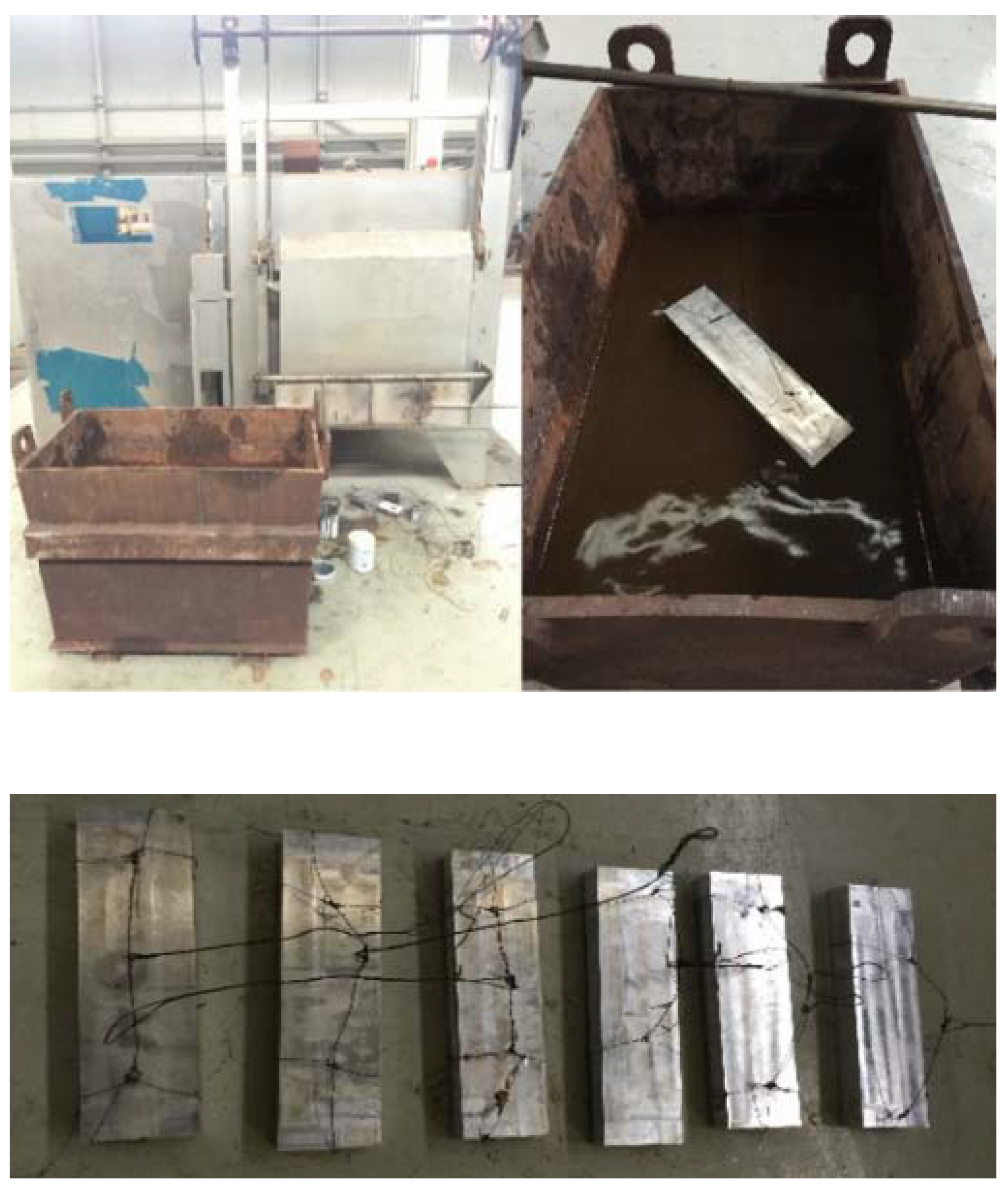

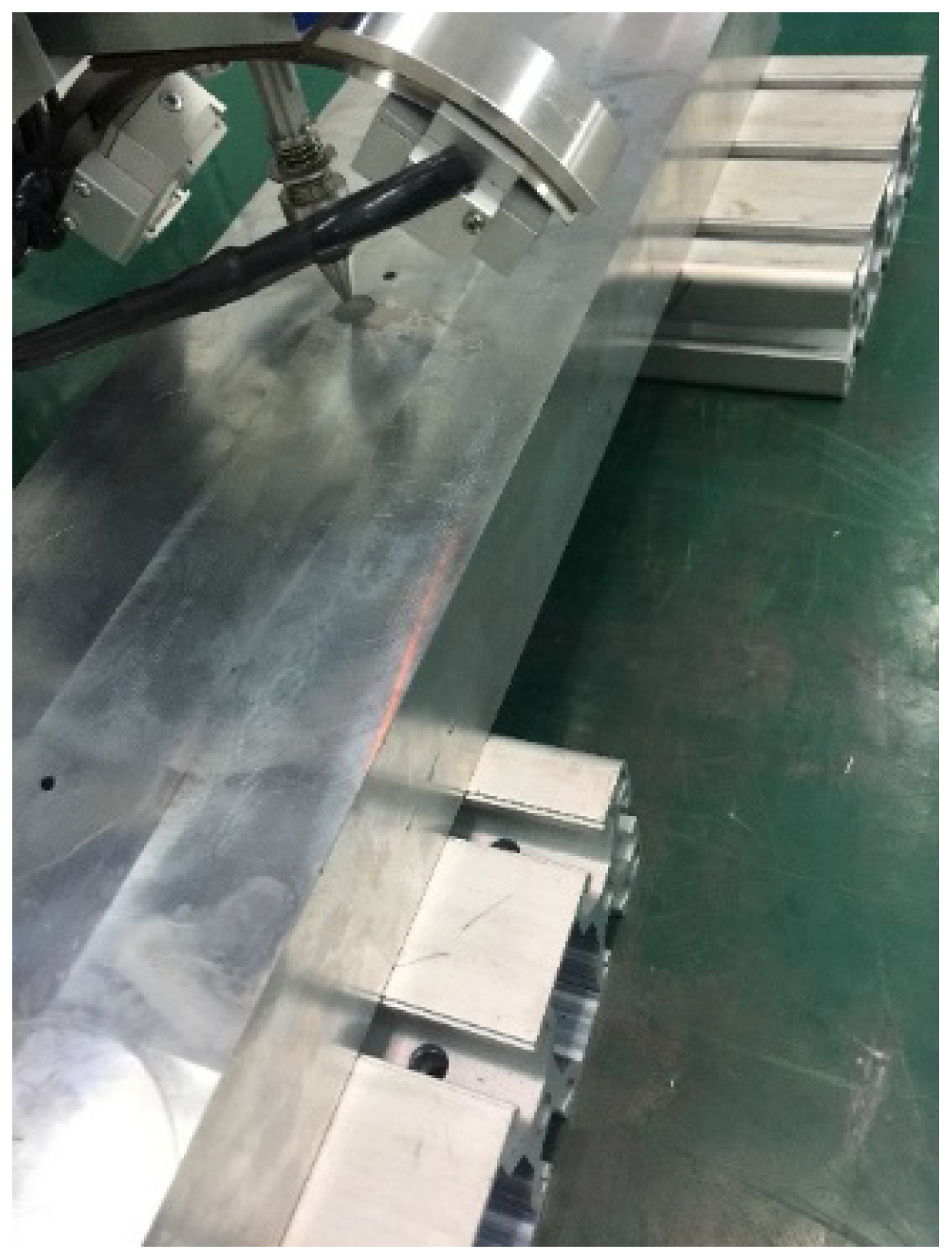

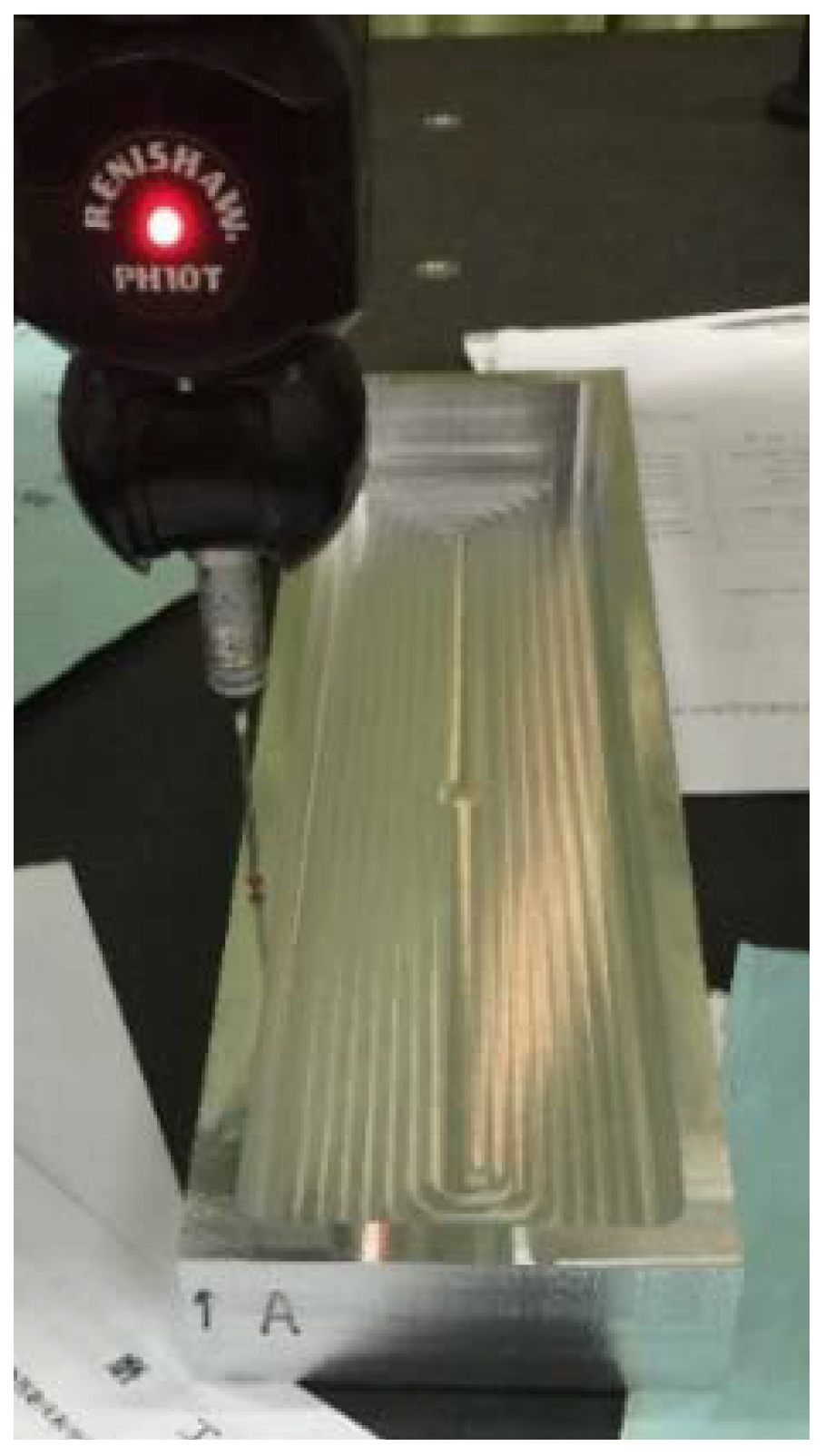
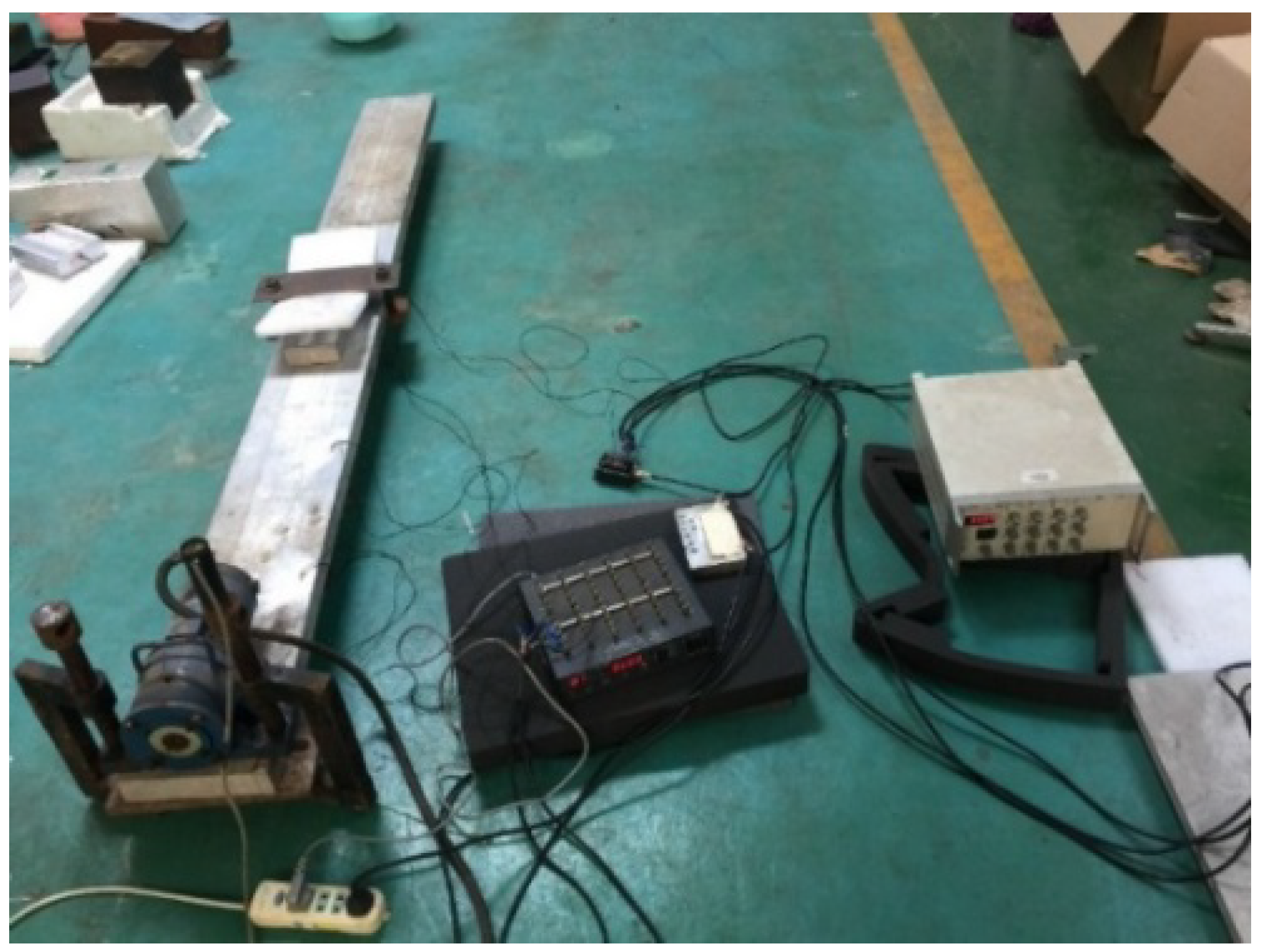


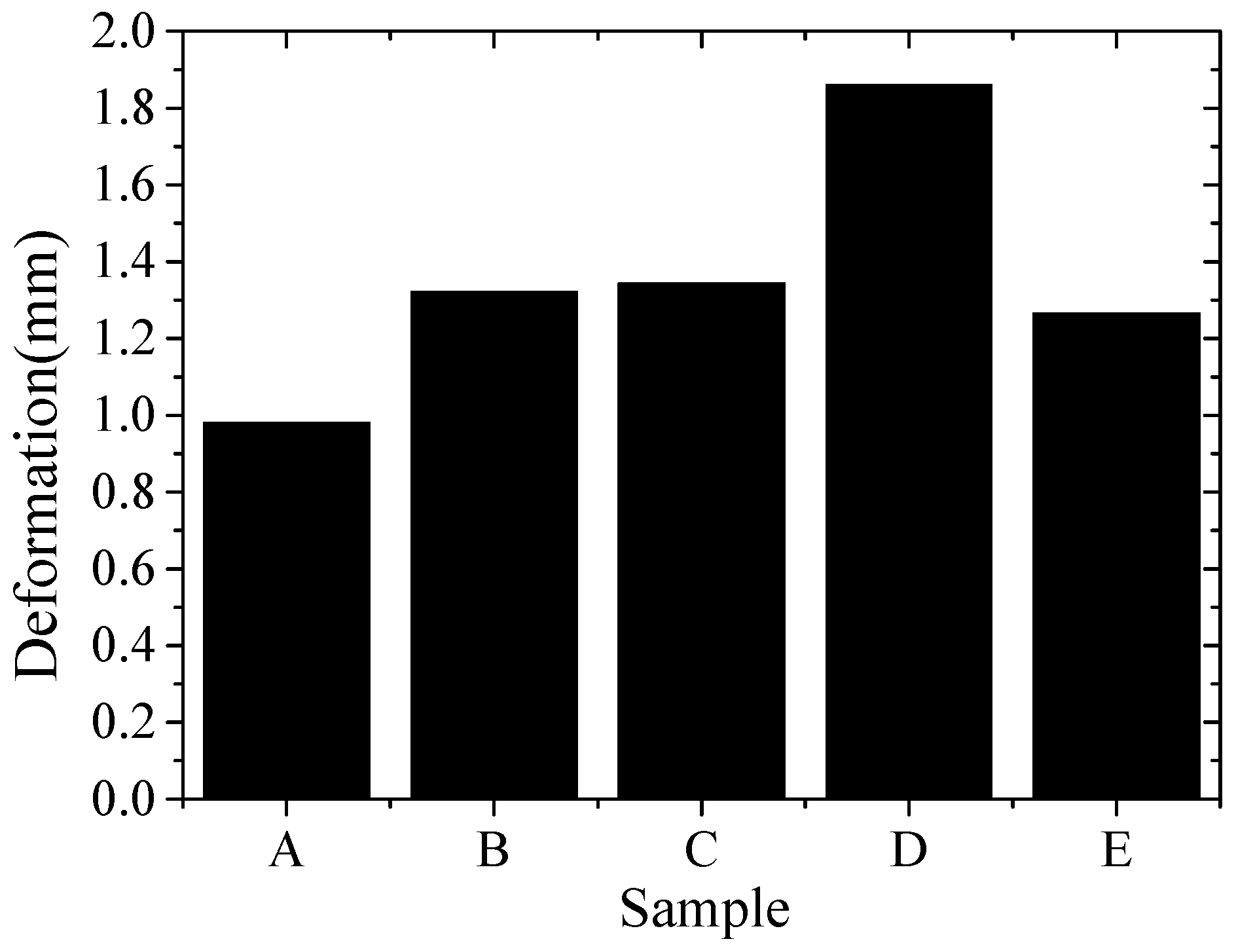
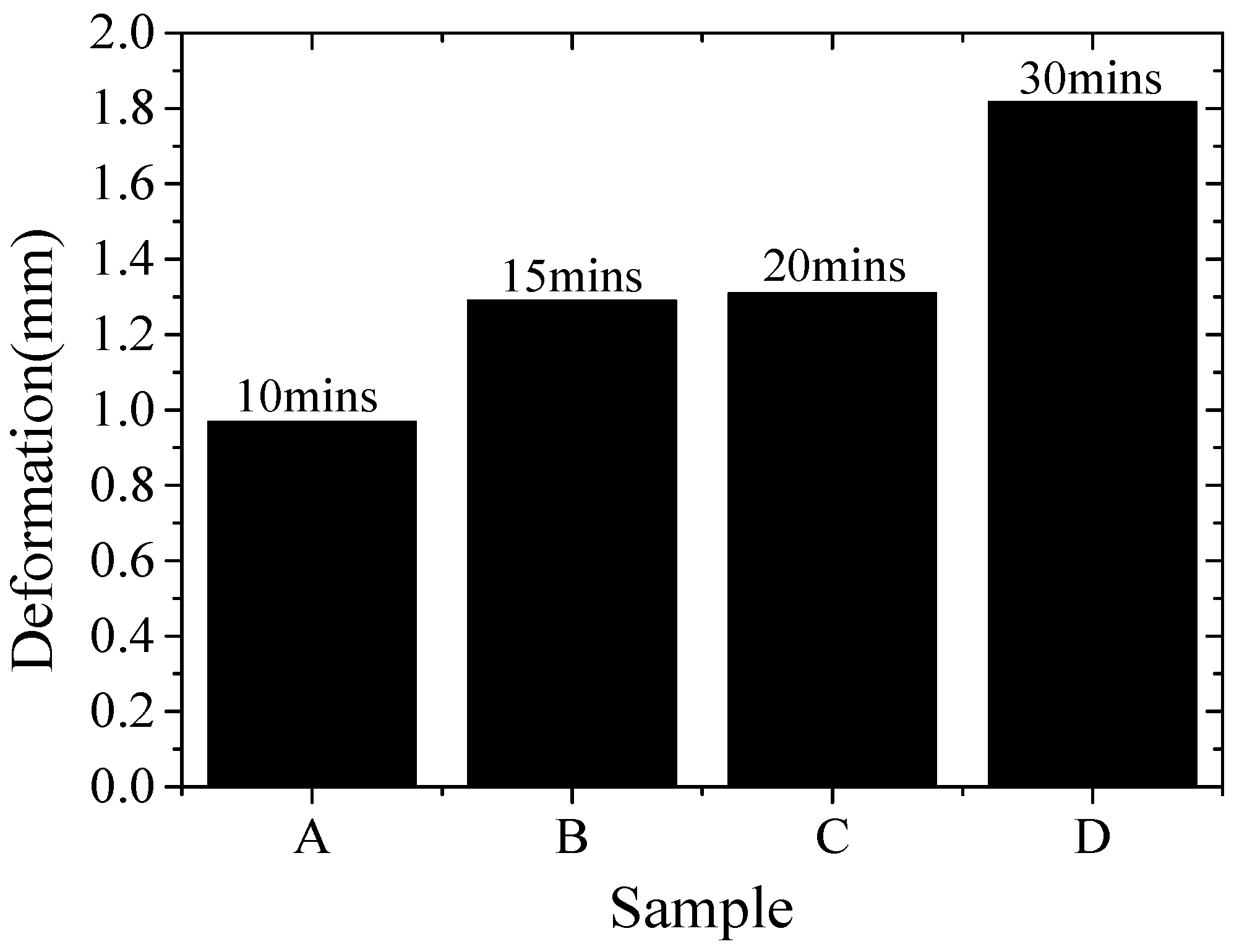

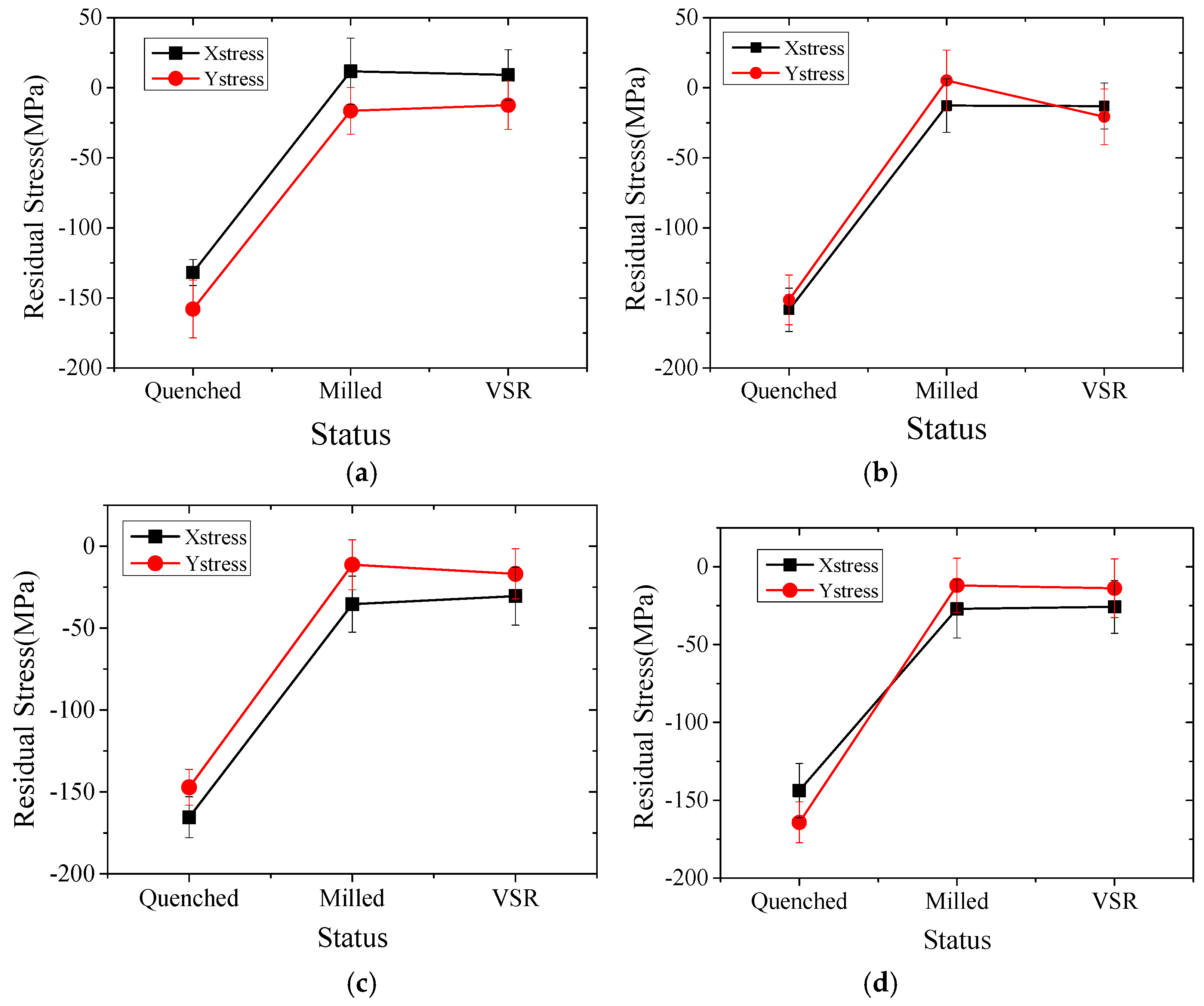
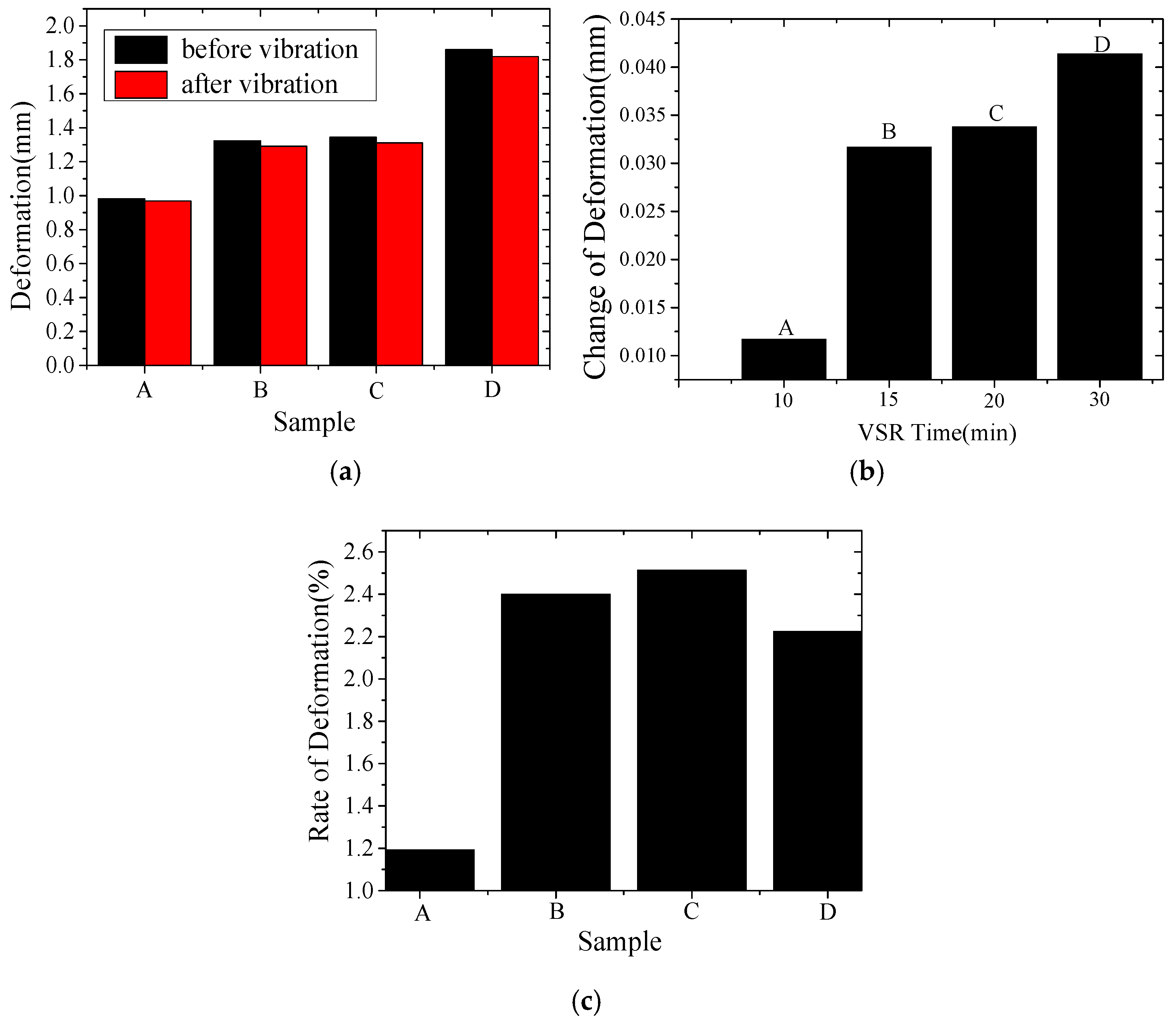
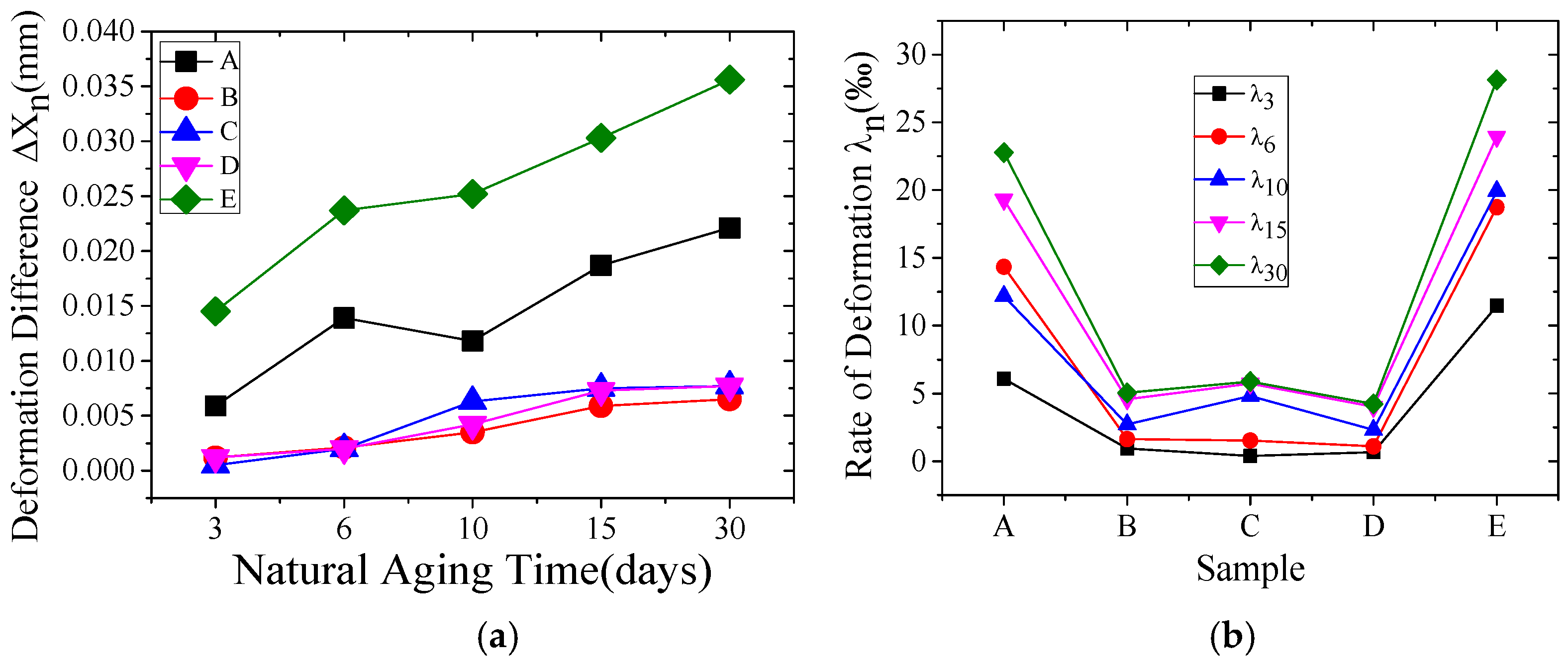

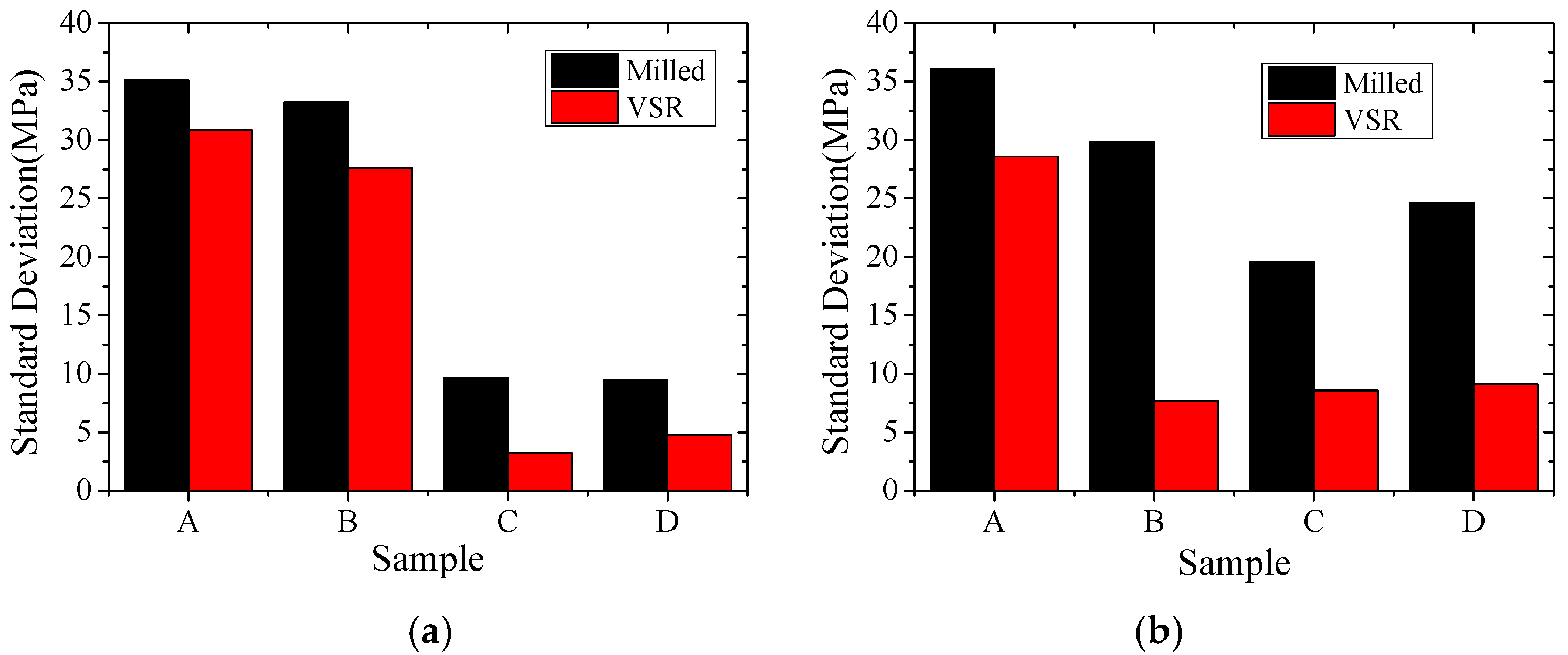
| Composition | Si | Fe | Cu | Mn | Mg | Cr | Zn | Ti | Al |
|---|---|---|---|---|---|---|---|---|---|
| Wt % | 0.4 | 0.45 | 1.56 | 0.3 | 2.66 | 0.21 | 5.28 | 0.2 | Bal. |
© 2018 by the authors. Licensee MDPI, Basel, Switzerland. This article is an open access article distributed under the terms and conditions of the Creative Commons Attribution (CC BY) license (http://creativecommons.org/licenses/by/4.0/).
Share and Cite
Gong, H.; Sun, Y.; Liu, Y.; Wu, Y.; He, Y.; Sun, X.; Zhang, M. Effect of Vibration Stress Relief on the Shape Stability of Aluminum Alloy 7075 Thin-Walled Parts. Metals 2019, 9, 27. https://doi.org/10.3390/met9010027
Gong H, Sun Y, Liu Y, Wu Y, He Y, Sun X, Zhang M. Effect of Vibration Stress Relief on the Shape Stability of Aluminum Alloy 7075 Thin-Walled Parts. Metals. 2019; 9(1):27. https://doi.org/10.3390/met9010027
Chicago/Turabian StyleGong, Hai, Yanjie Sun, Yaoqiong Liu, Yunxin Wu, Yipeng He, Xiaoliang Sun, and Minghai Zhang. 2019. "Effect of Vibration Stress Relief on the Shape Stability of Aluminum Alloy 7075 Thin-Walled Parts" Metals 9, no. 1: 27. https://doi.org/10.3390/met9010027





